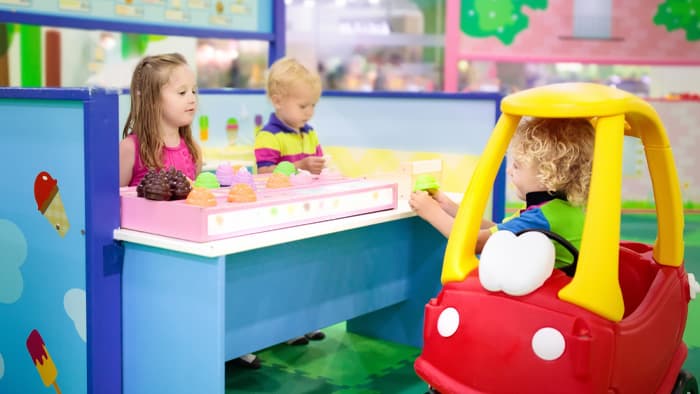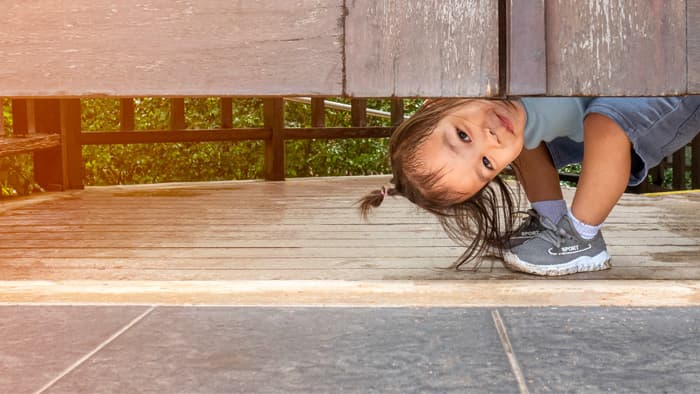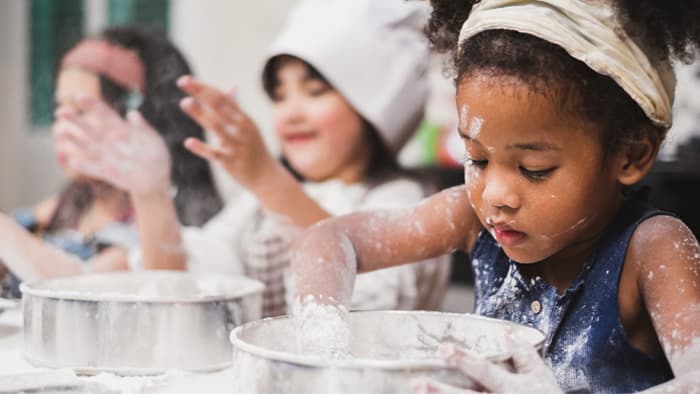


21 Fun Preschool Learning Activities to Do at Home

Try nine fun preschool games that build early reading and math skills below, plus access hundreds of online preschool games with a free trial here.
Learning to read is the most important skill your child will develop. So if you want to set your preschooler up for reading success, it pays to start early!
The Key?
Make learning fun by engaging your preschooler in learning activities and games! Preschool learning activities to do at home can include reading exercises, learning numbers, shapes or something more creative, like painting.
Children learning to read often stumble with understanding phonics, that is, letters and their corresponding sounds. One of the best ways to overcome this problem is to engage them in pre‑literacy activities, such as preschool phonics.
Good phonics instruction helps kids learn, understand and make use of letters and their corresponding sounds in their reading and writing.
Start learning at home with singing, playing, reading and talking with your child to help them build great pre‑literacy skills. For example, when speaking with your child, you can ask them to name the beginning letter of a word that comes up in conversation.
You can find a wide range of preschool phonics games in Reading Eggs which covers the five key literacy areas: phonemic awareness, phonics, fluency, vocabulary and text comprehension. Learn more about how Reading Eggs covers these five pillars of reading.
You can also try these Top 21 preschool learning activities at home, designed to build essential early reading, phonics and math skills:
1. Letter Races
You need a magnetic board (or fridge), magnetic letters and a bit of space. Set up the magnetic board on one side of the room and place the magnetic letters in a bowl on the other side. Call out a sound or a word starting or ending in a particular sound. Then ask your child (with a ready, set, go!) to pick out the correct magnetic letters and run over as fast as they can to stick it on the board.
2. I Spy the Sound
This is a fun way to help preschoolers build phonics skills and phonemic awareness. In this variation of the classic game, 'I Spy', ask your child to spy words that begin with a certain sound, rather than a letter. For example, “I spy with my little eye, something beginning with sss.”
Follow the link to download a free Alphabet I Spy printable.

3. Matching Rhymes
Find a corkboard or something you can stick pins into. Write down a list of words on one side of a sheet of paper and on the other side write down words that rhyme with these words, but in a different order. Then stick pins next to each word. Give your child some rubber bands and ask them to match the rhyming words on each side of the page by placing the rubber bands on the pins to connect the rhyming pair.
4. Phonics Hopscotch
You will need a piece of chalk for this game. Draw hopscotch markings on the ground (how many squares and in what shape they are arranged is up to you). In each square draw a letter of the alphabet (you may want to draw both the upper‑ and lower‑case letters in each).
There are a few ways you can play this game – you can call out a letter or combination of letters and ask your child to jump on those letters and as they do, for them to sound out each letter. Or you can ask your child to jump on the letters in alphabetical order, sounding them out as they go along. You can also roll dice and ask your child to jump to the square that matches the number rolled, counting the squares as they jump and sounding the letter out at the end.
5. Play Shop
Playing shop is a fun way to practise early maths skills and show your child how numbers and counting are a part of everyday life. Gather toys or grocery items and label them with prices written on sticky notes. You can pretend to buy and sell items using play money or creating your own paper money. This will teach your child the concept of paying for items using notes and coins.

6. Don't Drop the Ball
Count the number of times you and your child can throw a ball to each other without dropping it. You can also count the number of times you can tap a balloon before it reaches the ground.
7. Play Heads or Tails
Introduce your child to the concept of chance and probability with a simple game of heads or tails. Probability tells us that for a single coin toss, there are two possible outcomes – heads or tails – so the chance of getting either is one in two, or 50 per cent.
8. Guess the Weight
Use kitchen scales to weigh certain objects around the house, such as a toilet paper roll or a pumpkin. You can also help your child estimate the weight of each object before weighing them.
9. Number Safari
Call out a number and ask your preschooler to find it. You can do this activity while driving (e.g. spotting numbers on signs, houses and number plates) or while shopping. You can also ask them to identify shapes, colours and patterns out in the real world.
10. Have a Ball with Playdough
For this activity you will need some paper plates and of course, some playdough. Start by writing letters and numbers down on some paper plates. Children can then make the shapes of letters and numbers with playdough. To practise counting, have them roll the playdough into balls and match the number on the plates. Manipulating playdough is a great way to build your preschooler's pre-writing skills.
11. Number Matching with Cars
Make a cardboard car park with the help of your special assistant and tape numbers onto toy cars. Number all the car spaces and get yourvchild to park their cars in the correct spaces.
12. Hide and Seek with Shapes
Make some cut‑outs of different shapes (and numbers/letters if you can). Then play a game of hide and seek with the shapes. The aim of the game is to have one person counting down and the other hides the shapes around the house to find. You may even discover where your kids hid those missing car keys from six months ago!

13. Painting with Sponges
Cut some sponges up into different shapes and sizes and attach them to popsicle sticks (or whatever you have lying around). Your kids will love the different effects than can make while painting! If you want to get even more creative you can use a larger piece of sponge to make a rainbow by applying all the colours and using a steady swiping motion across the paper.
14. Sensory Letter Hunt
Bury letters in sand, or hide them in a box where they can't be seen. The aim of the game is to get your little one to find the letters of their name, or some other simple words. For older kids, have them try to identify the letters by touch alone!
15. Colour Hunt
This is a pretty simple game where preschoolers simply have a scavenger hunt for objects around the house that match the colours on the scavenger hunt list. You can make your own list, or find something online.
16. Painting with a Twist
There's plenty of ways to apply paint to a page and you don't always need a brush! Try getting your child to use a straw to blow watered down paint around the paper to create some cool patterns! Or, put some bubble bath liquid into a container with paint and water, put a sheet of paper on the top and get them to blow bubbles into the water. The paint infused bubbles will create a cool and unique design on the paper.
17. Journaling
Getting in the habit of journaling early can help set kids up for life. If it's too early for your little one to write in a journal, start with drawing and add letters and numbers to the experience. For example on Monday, they could draw a picture of what they did that day, write the letter "M" in capital and lowercase, then write the date.
18. Cooking
Making a simple meal with your little one is a great way to connect reading and math in real life. Try to start with something simple, like biscuits, or damper. Your kids will love the sensory experience of kneading the dough and will get practice with practical math by measuring and counting.

19. The BIG Reveal
Start by writing down your child's name with a white crayon on some paper. Then, with watercolour paints, get your child to begin colouring in the paper with different colours. The white crayon will appear as their name as they add colour to the paper (as if by magic).
20. Sidewalk Science
Playing with sidewalk chalk or footpath chalk is always a hit with kids. But, why not spice it up with some science? Spraying the chalk with some vinegar will cause the chalk to bubble up and add some fizz to your fun. Try drawing a volcano and spraying the lava!
21. Colour Wheel of Fortune
Begin by making a wheel from cardboard and painting each section a different colour. Spin the wheel and when it lands on each colour, your child can run off and find the corresponding colour. When they complete the wheel, they win a prize!
We hope you enjoyed these preschool learning activities to do at home! Make sure you bookmark this page for next rainy day so that you can keep your preschooler entertained, educated and out of mischief!
We also invite you to try our online programs for preschoolers.
Click the link below to get a your free trial of Reading Eggs and Mathseeds, filled with hundreds of preschool reading games and math lessons. Mathseeds (for ages 3–9) teaches core math and problem‑solving skills with fun motivational elements that keep children engaged and keen to learn.
Try hundreds of online preschool games for FREE!
Reading Eggs and Mathseeds provide hundreds of online preschool games that build essential reading, phonics and math skills.
Why other people love the online preschool games in Reading Eggs
“I am amazed and how much my 3‑year‑old is learning with Reading Eggs! He can identify all of his letters and knows their sounds. At the rate he's learning, he'll be reading by Kindergarten. He LOVES to “play” it and views it as fun, not work. He had never used a computer before trying Reading Eggs, but it's presented in a way that is intuitive for him, as he can work his way through it on his own. He was even using the mouse like a pro after the first day!” – R. Martz






